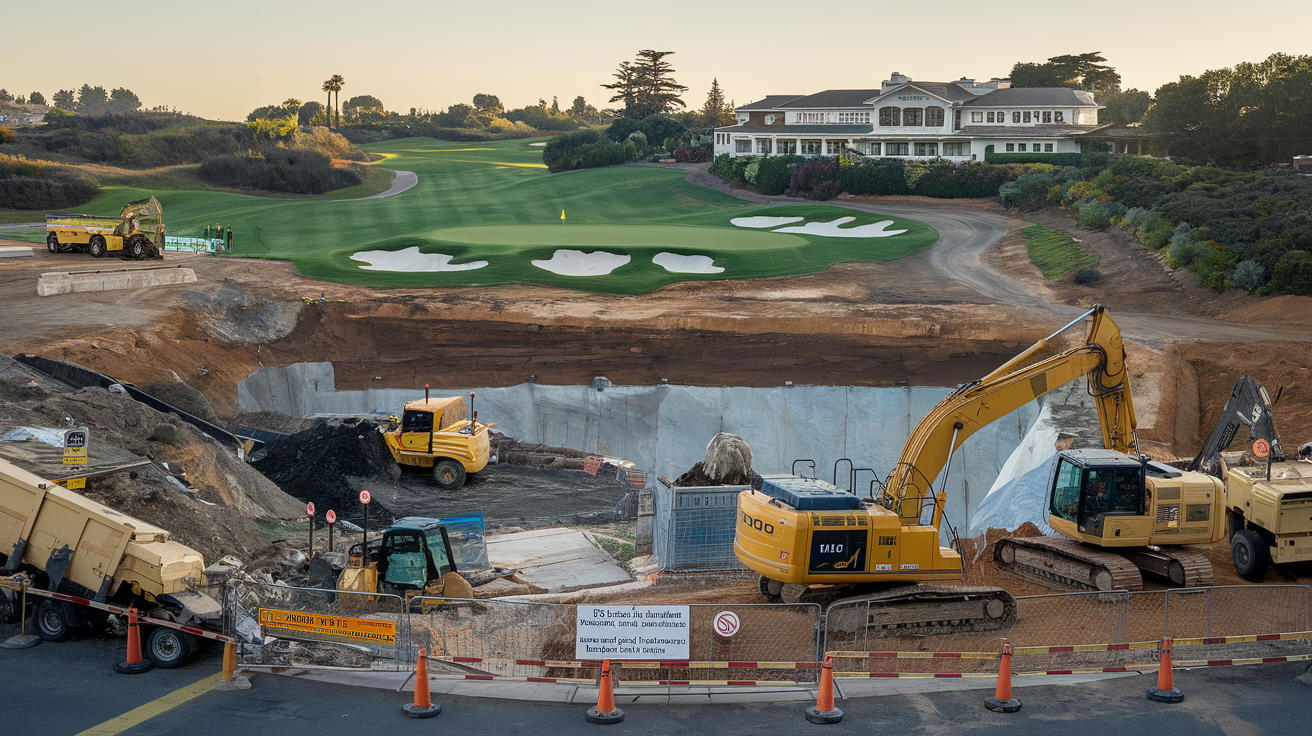Montecito Country Club Easement Dispute: Key Facts and Solutions

The Montecito Country Club easement dispute has captured widespread attention due to its complex legal, historical, and community implications. Easement disagreements often arise when property rights and usage intersect, especially in areas with high-value real estate and rich histories like Montecito. In this article, we delve into the origins of the dispute, the legal principles at play, and the potential outcomes for stakeholders.
Understanding Easements and Their Role
Easements are a cornerstone of property law, offering the right to use another’s land for a specific purpose. Commonly granted for utilities, roads, or pathways, easements serve practical and often essential functions. However, disputes occur when these rights clash with the desires or development plans of the landowner. In the Montecito Country Club case, easement rights involve both legal intricacies and emotional investment from the local community.
Types of Easements in Real Estate
- Prescriptive Easements: Acquired through long-term, open, and notorious use.
- Express Easements: Written agreements between parties.
- Implied Easements: Established based on property necessity or historical usage.
- Easements by Necessity: Granted when property access would be otherwise impossible.
Historical Significance of Montecito Country Club
The Montecito Country Club, nestled in the picturesque Santa Barbara County, is a landmark with deep historical roots. Originally established in the early 20th century, the club has undergone various transformations, reflecting Montecito’s evolution as a hub for affluent residents and visitors. This rich history complicates the easement dispute, as the club’s land carries cultural and sentimental value alongside its financial worth.
The Genesis of the Easement Dispute
The Montecito Country Club easement dispute stems from conflicting visions of land usage. Developers and club stakeholders prioritize maximizing property value, while easement holders and community advocates seek to preserve accessibility or traditional land use. Disputes like these often arise during redevelopment projects, where longstanding easements may be seen as obstacles.
Key Players in the Dispute
- Montecito Country Club Management: Advocating for redevelopment and modernization.
- Easement Holders: Insisting on their legal rights to access or use specific portions of the property.
- Local Community Members: Highlighting the cultural and historical importance of the land.
- Legal Experts: Offering interpretations of property laws and historical documentation.
Legal Framework Governing Easements
Understanding the Montecito Country Club easement dispute requires familiarity with the legal framework surrounding easements. Courts often examine the intent behind the original easement agreement, its current relevance, and the balance of public versus private interests.
Legal Factors in the Montecito Case
- Scope of Easement: Determining whether its usage aligns with the original intent.
- Modification or Termination: Assessing if changing conditions justify altering the easement.
- Compensation for Affected Parties: Exploring monetary settlements for impacted stakeholders.
Impact on the Montecito Community
The Montecito Country Club easement dispute extends beyond legal complexities, touching on community identity and access. Residents often view the easement as a symbol of shared space and heritage. A resolution that favors exclusivity or redevelopment risks alienating these stakeholders, while prioritizing accessibility may hinder modernization efforts.
Community Concerns
- Environmental Impact: Redevelopment may disrupt local ecosystems.
- Cultural Preservation: Protecting landmarks and historical usage patterns.
- Equity in Access: Ensuring fair treatment of all stakeholders.
Precedents in Easement Disputes
Legal precedents often guide outcomes in easement disputes. Cases involving historical properties or high-value land frequently result in nuanced rulings that balance preservation and development. Studying similar disputes provides insights into how the Montecito case might be resolved.
Notable Cases
- Marvin v. Marvin: Established the importance of clear documentation in easement agreements.
- Brown v. Board of Trustees: Highlighted community interests in property access disputes.
- Anderson v. City Council: Examined environmental impacts of easement terminations.
Strategies for Resolving the Dispute
Resolving the Montecito Country Club easement dispute requires a balanced approach that considers legal rights, financial implications, and community well-being. Mediation and compromise are often favored to avoid lengthy and costly litigation.
Potential Solutions
- Negotiated Settlements: Agreeing on compensation or alternative arrangements.
- Judicial Determinations: Relying on courts to clarify or enforce easement terms.
- Community Forums: Facilitating dialogue among stakeholders to reach consensus.
What Lies Ahead
As the Montecito Country Club easement dispute progresses, its resolution will set a precedent for similar cases in affluent communities. Whether through negotiation or legal action, the outcome will reflect broader trends in property law and urban development.
FAQs
What is the Montecito Country Club easement dispute?
This refers to a legal disagreement over property access rights at the Montecito Country Club, involving stakeholders with competing interests.
Why are easements important in property law?
Easements allow specific uses of land by parties other than the owner, enabling essential functions like roadways and utility access.
How does community interest affect easement disputes?
Community concerns often shape the resolution by highlighting cultural, historical, and environmental priorities alongside legal considerations.
What legal principles govern easements?
Courts evaluate the intent, scope, and relevance of easements, alongside equitable outcomes for involved parties.
Can easement disputes be settled outside court?
Yes, mediation or negotiated settlements are common approaches to resolving such disputes without litigation.
What impact does the Montecito Country Club dispute have on the area?
The dispute affects community identity, access, and the balance between preservation and modernization in Montecito.






